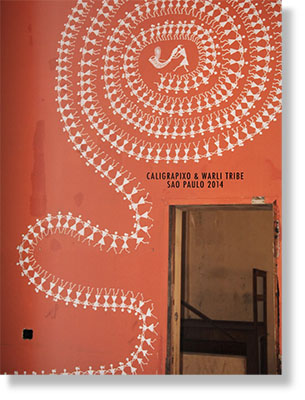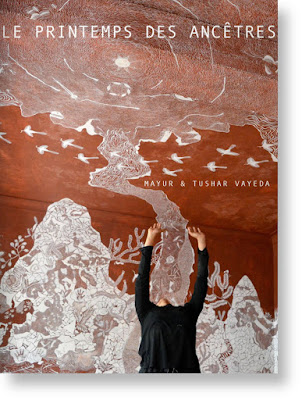Source Art Media Agency
La mondialisation du marché de l’art n’est pas un phénomène récent. Il s’agit même d’une condition structurelle de la constitution de ce marché, et ceci dès le XVIe siècle, lorsque la circulation des œuvres et des artistes s’est intensifiée en Italie, puis sur l’axe Paris-Londres-Amsterdam. Ce qui a changé, c’est l’amplification des échanges internationaux et l’accélération des basculements d’un pôle à l’autre, après une longue période de concentration sur les États-Unis et l’Europe. Pourtant, l’Amérique a longtemps été considérée comme indétrônable : elle représentait encore 50 % du marché mondial en 2000, deux fois moins une décennie plus tard. En 2011, 43 % du marché de l’art mondial a été réalisé en Asie, loin devant les États-Unis (23,6 %) et la Grande-Bretagne (19,4 %). Retour sur une cartographie en profonde mutation.
> lire plus
mardi 26 février 2013
L’art : un marché sans frontières ?
dimanche 24 février 2013
Outsider Art Fair NY
Source Art Forum by Michaela Slavid
Part of the fair’s draw is the generous program of talks, organized for the second year by Valérie Rousseau. (She’s a new member of the American Folk Art Museum’s curatorial team, and is married to Edlin.) Sunday’s panel, “A Bridge Between Art Worlds,” brought curators Massimiliano Gioni, Daniel Baumann, and Ralph Rugoff together on the roof of the Dia building. Their priority: how to lift the veil from outsider art’s seclusion. Referencing similarities between work (created concurrently, and without cross-pollination) by Adolf Wölfli and the Dadaists, Baumann implied that similar parallels might hold keys to a more comprehensive art history. Gioni, in turn, suggested exhibiting outsider artwork “not as a new king or queen we crown in our museums,” but as a force to disrupt the status quo. (Perhaps a dethroning in favor of anarchy!)
> read more
samedi 23 février 2013
Amrita Jhaveri: A Prescient Eye for Indian Art

Source Sotheby's by James Reginato
In the late 1990s, Amrita Jhaveri took a gamble when she paid nearly $500 for a painting by a young, unknown Indian artist. It was so large she had nowhere to hang it, and Contemporary Indian art was then barely recognised as a field in which to collect. Three years later, in 2001, Tate Modern asked to borrow the picture – We Will Repay our Debt Sometime, by Girish Dahiwale – for its inaugural exhibition, Century City. “I felt really flattered,” Jhaveri recalled on a recent afternoon over tea in the boardroom of Sotheby’s London offices. Moreover, Jhaveri sensed she was on to something: Contemporary Indian art was a field about to come of age.
> read more
jeudi 21 février 2013
India's First Contemporary Art Biennale – Bucking the Trend
Source Mutual Art by Lihi Raviv
“There are parallel contemporaries in Indian art”, concludes Sunish, “One that is learnt and produced by artists coming out of urban ‘fine art’ institutions (the systems of which are a colonial residue), and a whole lot of others coming from a traditional or ‘folk’ stream of art and craft, that is integral to the various regions of India, and is now producing artists who are keen to take part in the expression of an Indian contemporary. This period is one of negotiation and collaboration among these two sections, and the market also has to make space for these experimental contemporaries.”
> read more
mercredi 20 février 2013
Material World

Source Art Forum by Zehra Jumabhoy
The Fifth Edition of the India Art Fair kicked off with a bang. Or should I say a smash? At the fair’s opening a couple weeks ago, dealer Lorenzo Fiaschi subbed in for artist Michelangelo Pistoletto—infamous in recent years for his performance Twenty-Two Less Two, in which he breaks giant gilded mirrors with a sledgehammer—and had a go at a piece of long, silvery looking-glass. CRACK! it went, shooting glittery shards all over Galleria Continua’s booth: The VIP preview had begun.
> read more
mardi 19 février 2013
François Hollande : Ganesh, ce dieu éléphant qui lui ressemble énormément

Source The Huffingtonpost
François Hollande, réincarnation d'une divinité hindoue ? L'hypothèse développée, non sans humour, par un économiste spécialiste de l'Inde a bien fait rire les invités de l'émission 28 minutes sur Arte. Mais sa théorie a fini par convaincre la correspondante à Paris du quotidien indien The Hindu : "Il y a une certaine ressemblance" a-t-elle concédé, un brin amusée.
> lire plus
dimanche 17 février 2013
Pick of the lots

Source Business Standard by Kishore Singh
Fifteen years ago — a lifetime in Indian art, according to some — Amrita Jhaveri started collecting modern and contemporary art somewhat more seriously than most, becoming one of the earliest specialists with a calibrated eye for picking art works that represented the best of each generation’s artists. The catalyst for that original impulse had been triggered by the inclusion of a work she’d acquired — “even before I had a flat”, she laughs during our conversation — in the Tate’s Garden City exhibition, and now Jhaveri seems bent on returning that favour by providing the Indian art market with a pleasant jolt.
> read more
samedi 9 février 2013
The Sahmat Collective: Art and Activism in India since 1989

Source Smart Musuem Chicago
Since 1989, the influential Delhi-based Sahmat has offered a platform for artists, writers, poets, musicians, actors, and activists to create and present works of art that promote artistic freedom and celebrate secular, egalitarian values. The collective formed in the weeks after playwright, actor, and activist Safdar Hashmi was fatally attacked by political thugs while performing a street play. In the more than twenty years since, Sahmat has drawn on India’s secular heritage and an expansive group of collaborators to produce a series of projects that engage in important political and social debates through a mix of high art and street culture. This exhibition will introduce Sahmat's work to the United States.
> read more
The 5th India Art Fair and Parallel Events

Source Art Agenda by Natasha Ginwala
Between thematic panel sessions at the Speakers’ Forum bringing together a dynamic line up of participants including critic-curators Adriano Pedrosa, Chus Martínez, Geeta Kapur, and Barbara London, among others, I slipped back into the fair to view the exceptional works of indigenous women artists, Yamuna Devi (1915–2011) and Chano Devi (1938–2010) at Paris-based collector and gallerist Hervé Perdriolle’s booth. These artists significantly transformed the traditional style of Mithila painting, interspersing native divinities and animist faith-motifs with local botanical and celestial references.
> read more
lundi 4 février 2013
Kiran Nadar Is Bringing Contemporary Indian Art Home in a Big Way

Source Art Info by Rosalyn D'Mello
Line of Control debuted in London in the 2009 Tate Triennial, which is where Nadar first encountered the piece. “Overwhelmed,” as she describes it, by the work’s “awe-inspiring” nature, she decided on the spot to acquire it for KNMA, India’s first private museum for modern and contemporary art. “It is one of the most phenomenal works any artist could have done. I had to have it,” Nadar said with conviction when asked if she had considered the logistical challenge that transporting and installing such a gargantuan work would present.
> read more
Archives revue de presse
-
▼
2013
(175)
-
▼
février
(10)
- L’art : un marché sans frontières ?
- Outsider Art Fair NY
- Amrita Jhaveri: A Prescient Eye for Indian Art
- India's First Contemporary Art Biennale – Bucking ...
- Material World
- François Hollande : Ganesh, ce dieu éléphant qui l...
- Pick of the lots
- The Sahmat Collective: Art and Activism in India s...
- The 5th India Art Fair and Parallel Events
- Kiran Nadar Is Bringing Contemporary Indian Art Ho...
-
▼
février
(10)




















